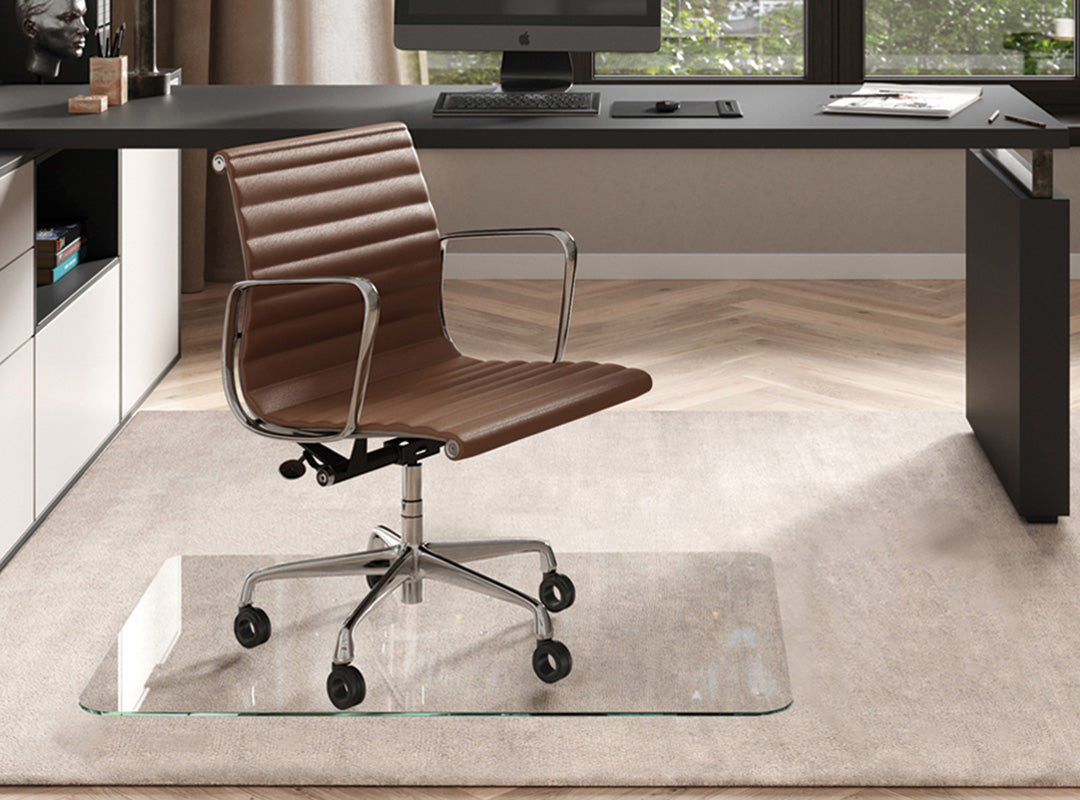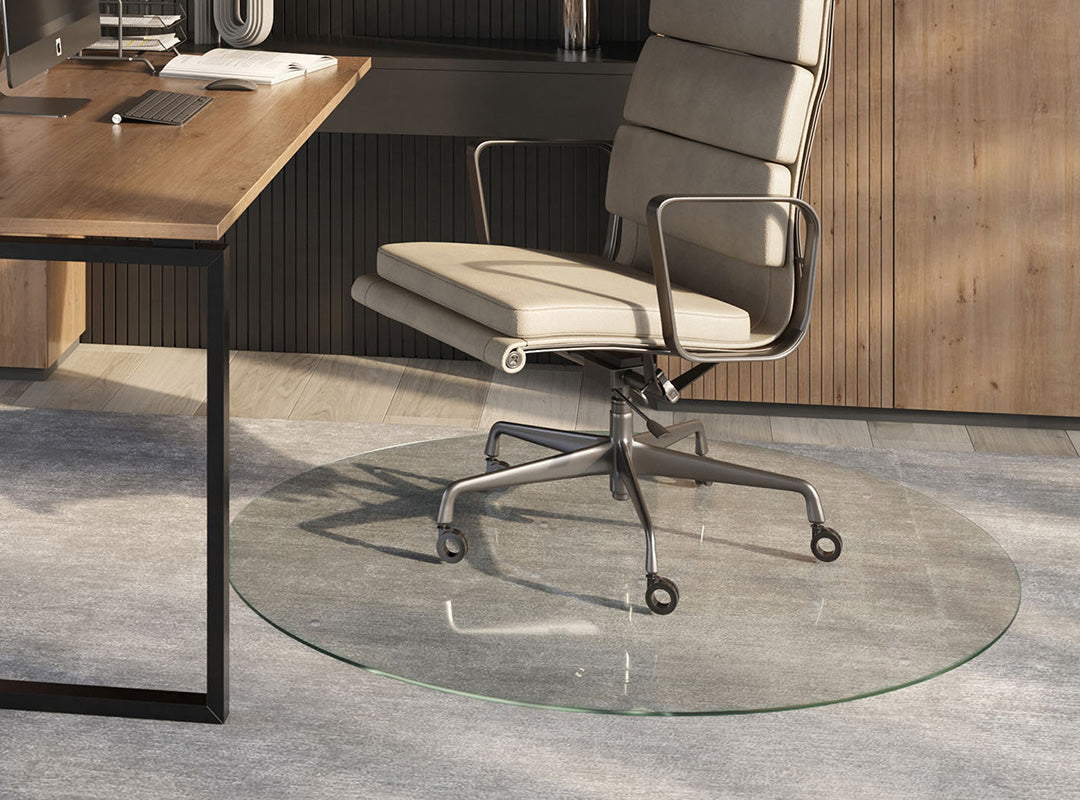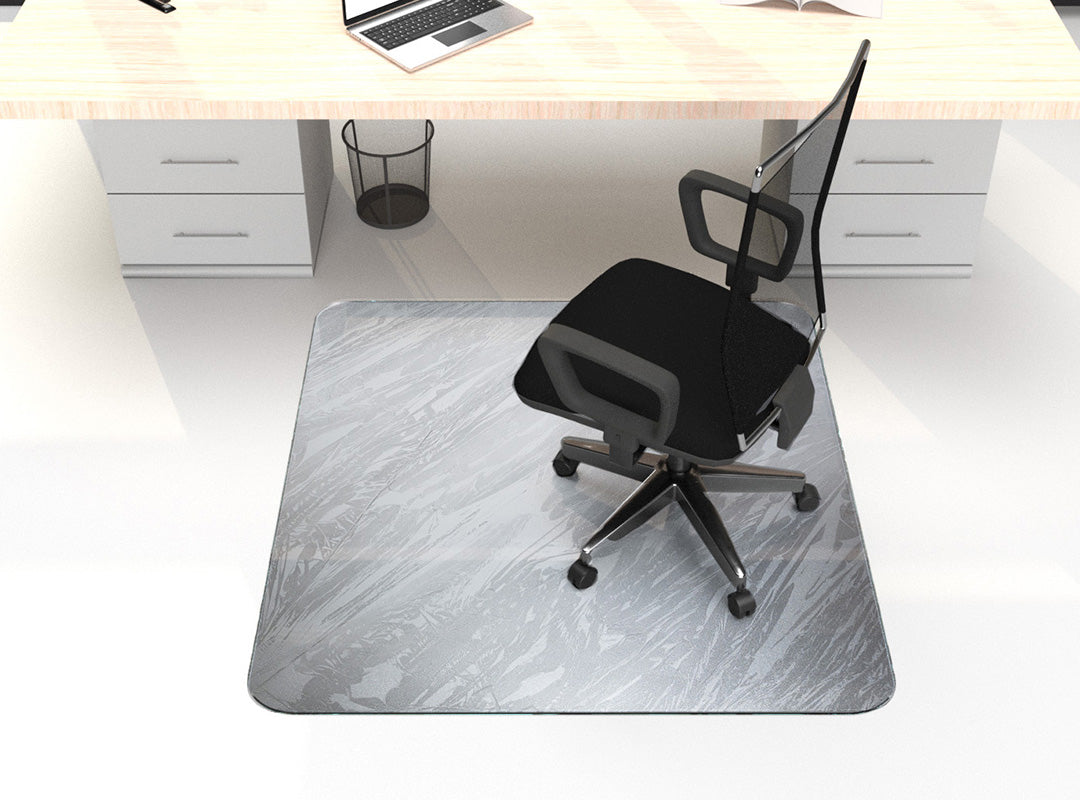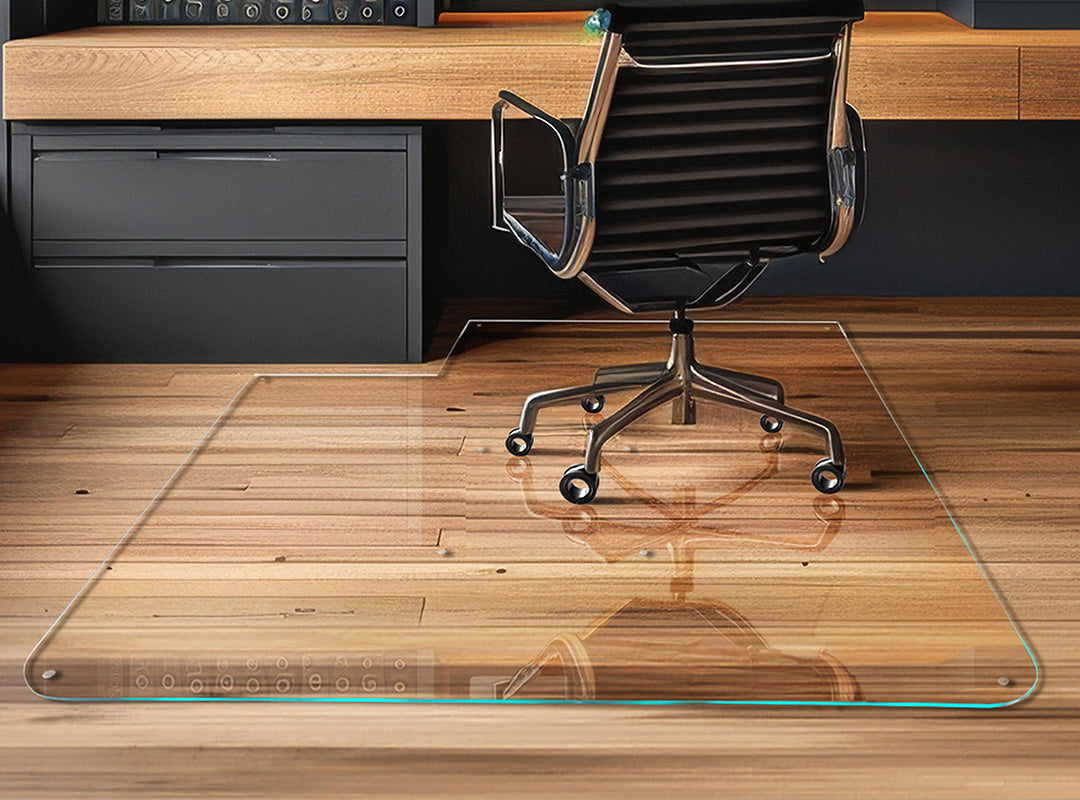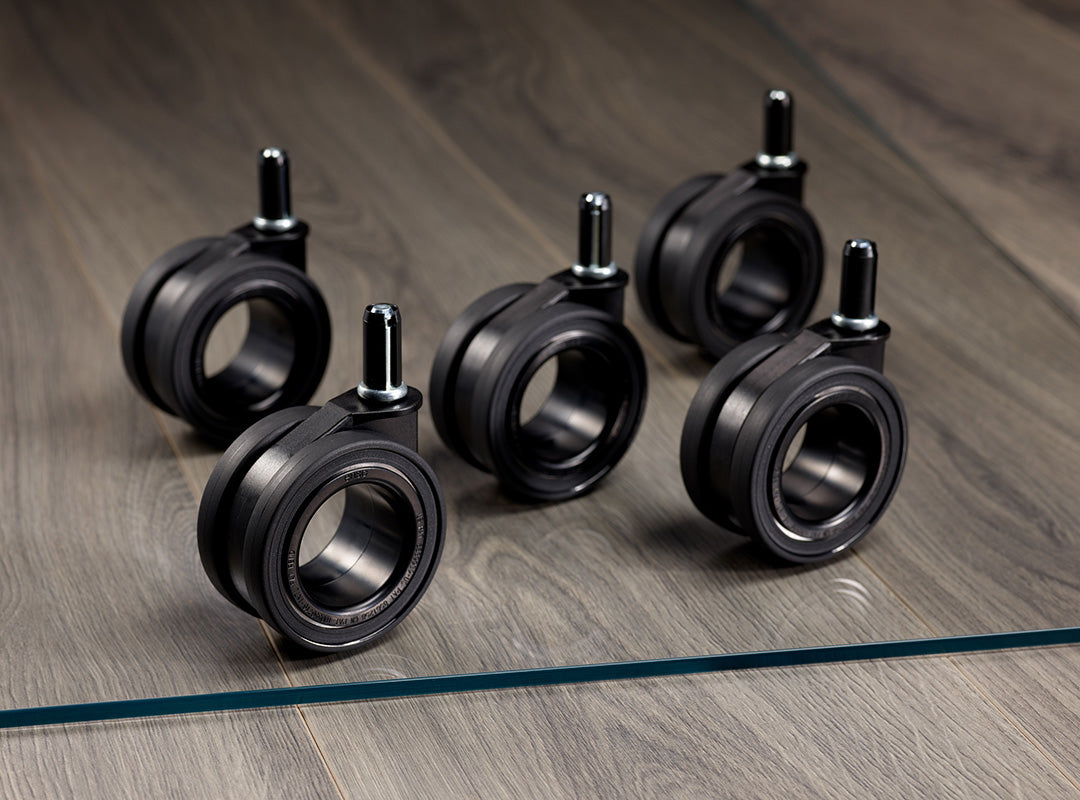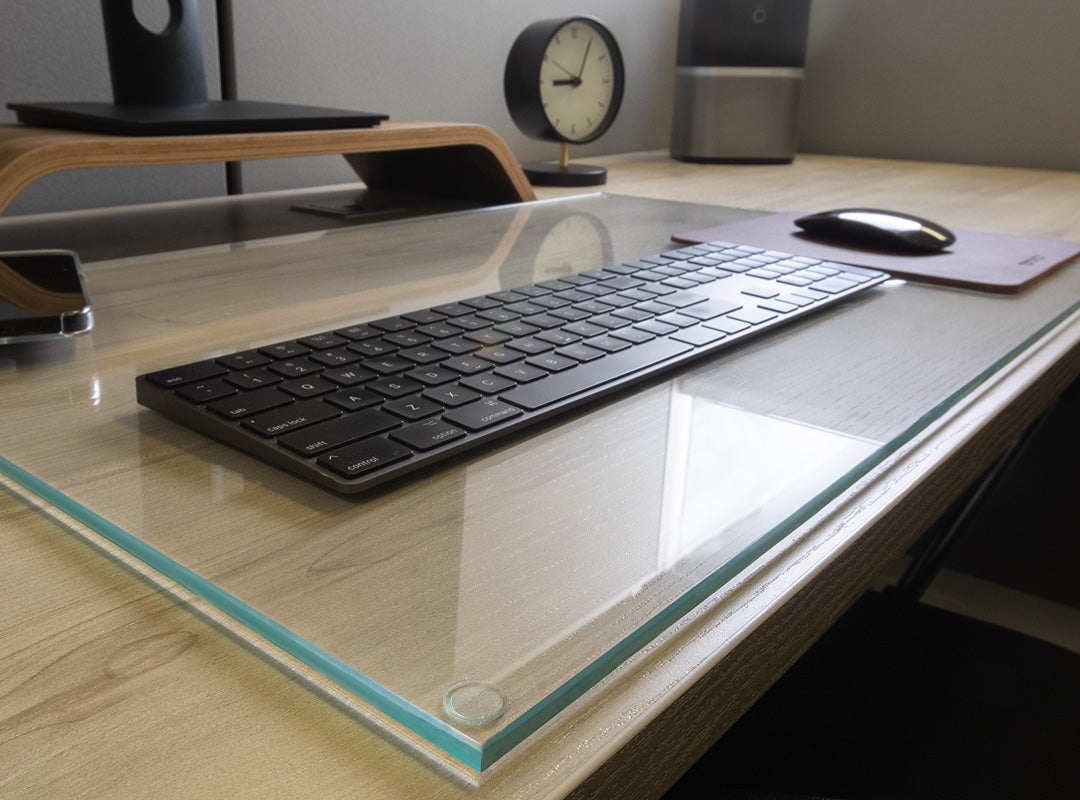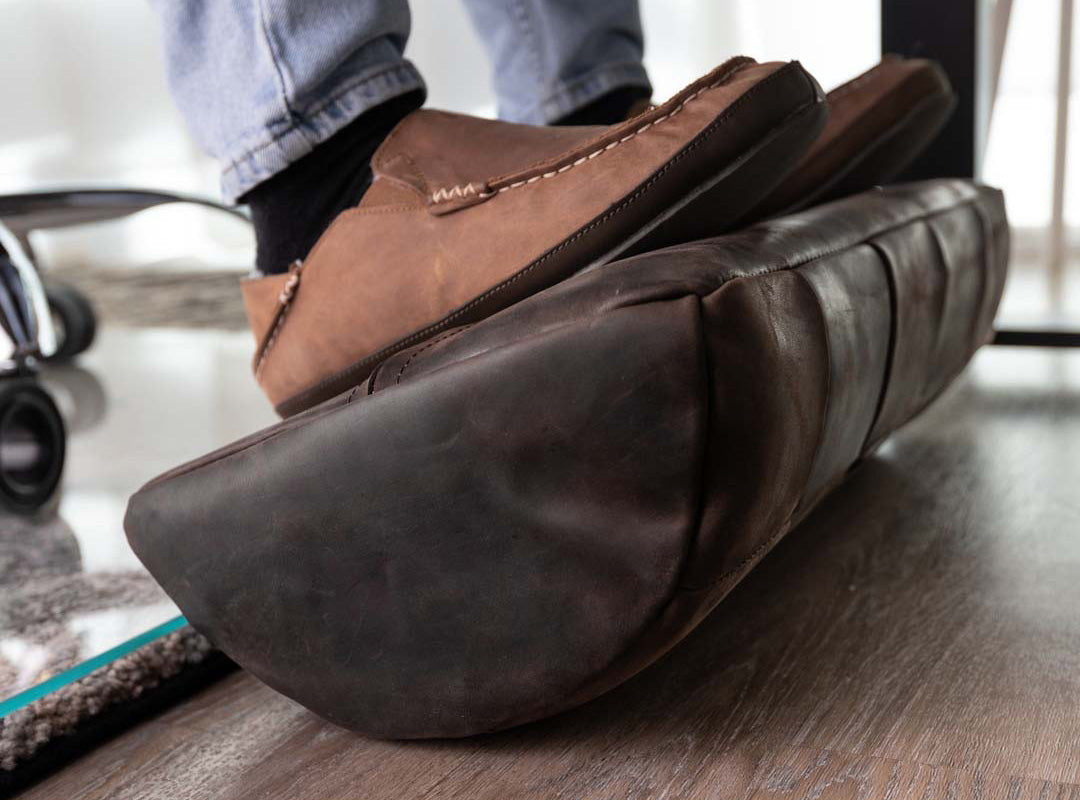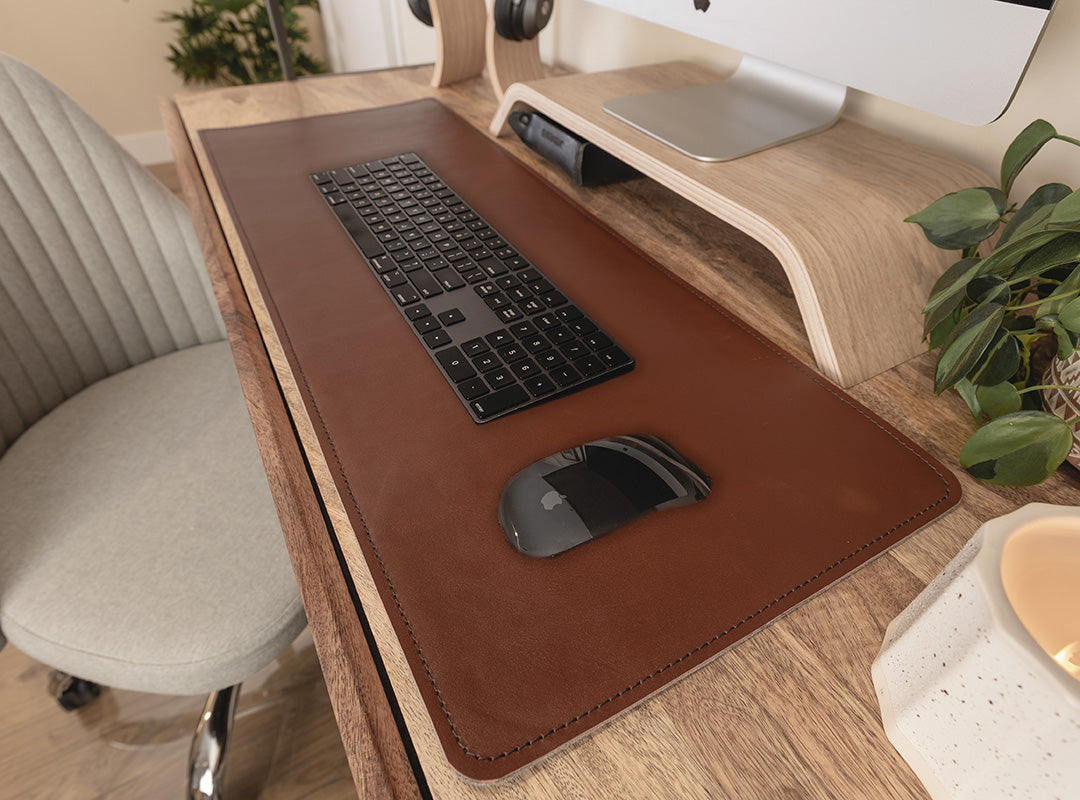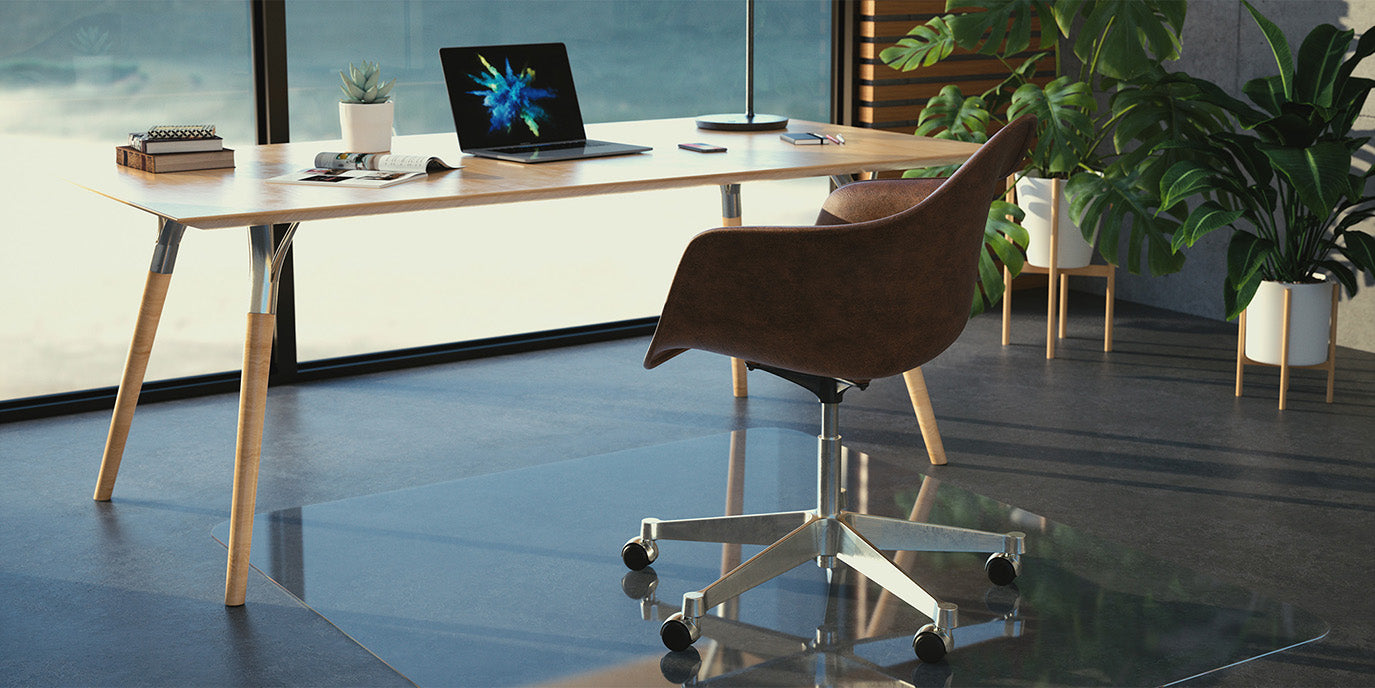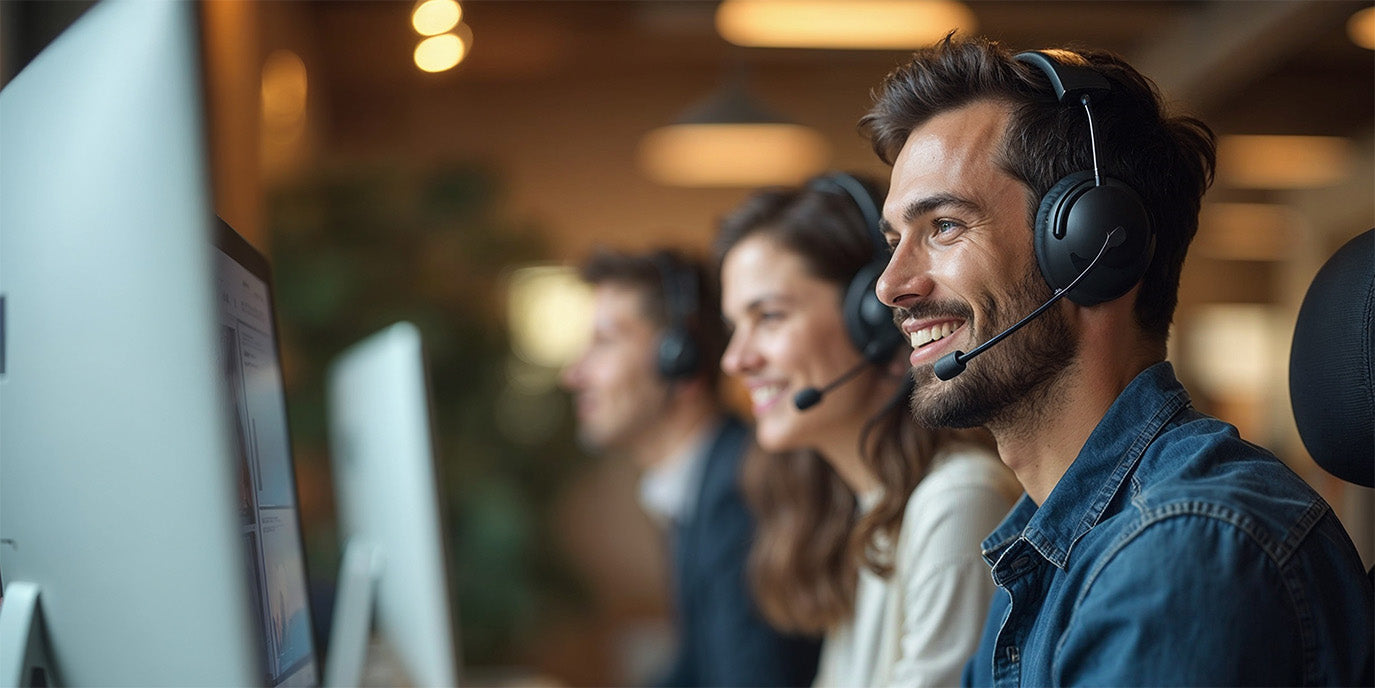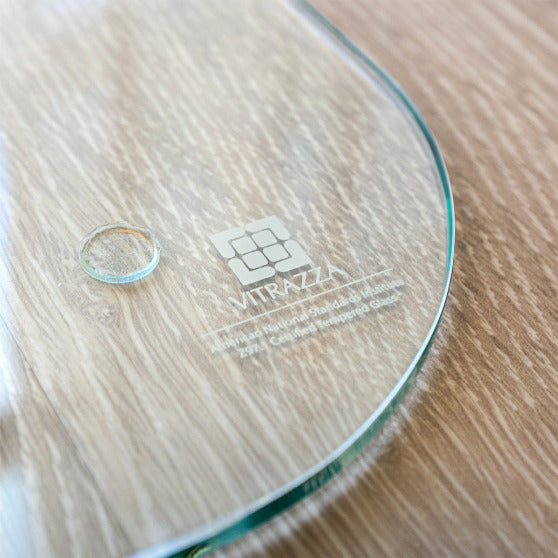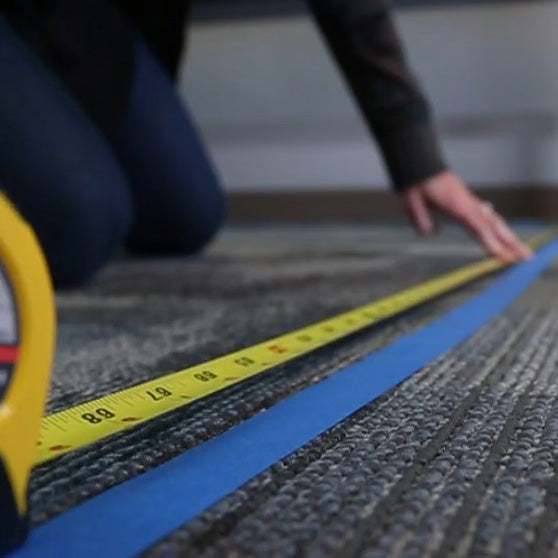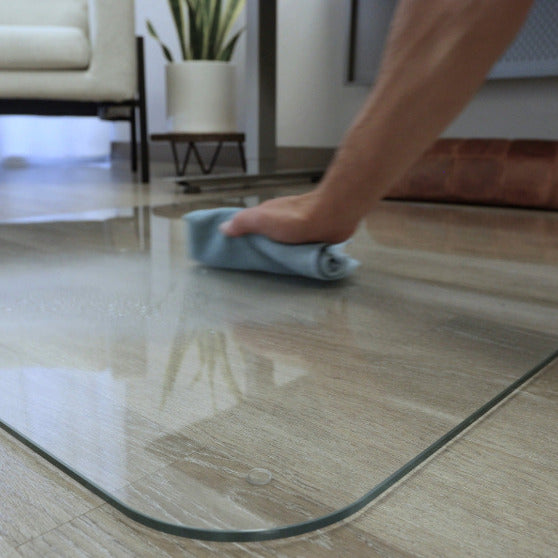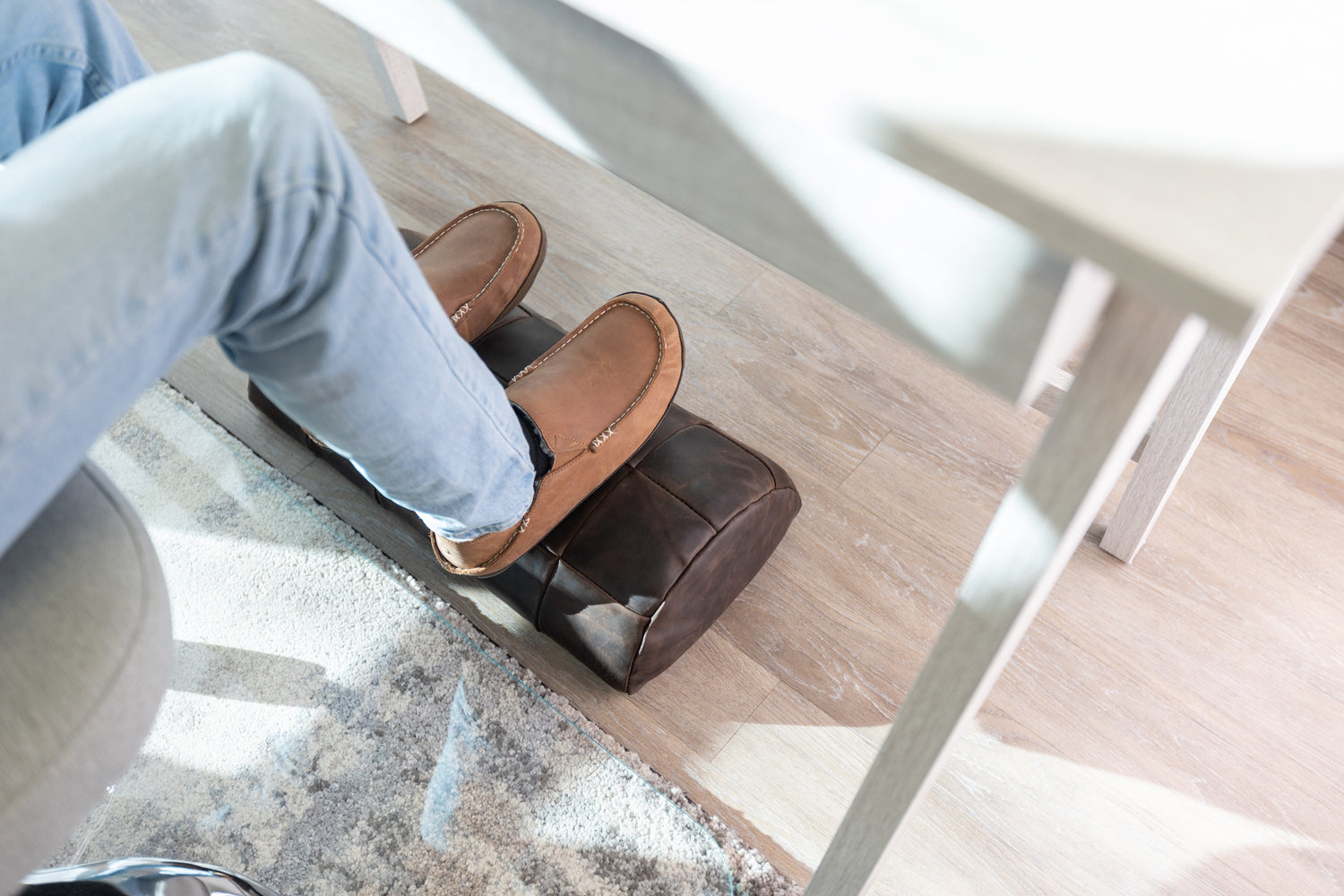In 2023, we're putting our best foot forward. Literally. We're giving our feet the attention they deserve as the true foundation of our bodies and the root of our ergonomic practices by adding the Vitrazza Footrest to our collection! Don't let the overwhelming amount of information and products on the market "de-feet" you. We've got the only footrest you need. It's even approved by a Certified Ergonomist!
Read on for a refresher on ergonomics and the benefits of micro-movements, the importance of a solid ergonomic footrest, and all you need to know about Vitrazza's newest product: the Leather Footrest.
Ergonomics Recap
Why is Ergonomics Important?
While often overlooked for convenience (or just due to bad habits), proper ergonomic practices within a workspace are crucial for protecting your body. Office workers, and those who perform lots of repetitive movements (e.g., typing), should ensure that they have a proper setup to keep their bodies healthy while they work. Remember, practicing proper ergonomics at your workspace can help mitigate and even prevent issues like:
- Backache and neckache
- Carpal tunnel
- Eye strain
- And more…
Ergonomics in the Office and at Home
If you're looking to improve the ergonomics of your workspace, take a quick audit of your setup (whether a home office, cubical, or in-office desk). What is the height of your desk? Is your chair adjustable? How is the lumbar support? Ensure you have all the necessary tools to keep your body healthy.
An example of a proper ergonomic setup could include the following:
- a desk adequately adjusted for your height (see below for more info on this tricky piece)
- a monitor riser (we recommend the Vitrazza Wood Monitor Riser) that ensures your screen is at the optimized eye level
- a split keyboard with a wrist rest
- a mouse pad with a wrist rest
- an office chair with lumbar support
- a footrest under the desk
How do I Improve my Sitting Posture?
Let's check-in. How is your posture right now? What is the angle of your neck? Are your eyes feeling strained? How are your feet positioned? Take thirty seconds to adjust your body (micro-movements!) to better align with the proper ergonomic practices. And check in with yourself frequently throughout the day to ensure you are staying aligned with best practices. Don't forget the days are long, but the years are short, and micro-adjustments and movements now may ease long-term health risks.
Need a more in-depth refresher? Check out our blog on five essential ergonomic pieces for your office.
The Importance of Movement and Proper Posture
While ergonomics encourages proper posture, it's also important to remember to practice micro-movements throughout the day to break up repetitive motion, which can cause undue strain and pain throughout your body.
Remember Kelly, our friend, the Certified Ergonomist? She provided us with this excellent study that changed what we know about ergonomics. While we recommend you read the whole piece, let's summarize the important takeaways:
People generally practice two types of movements in the office that relate to ergonomics:
- awkward postures (bad)
- mini-movement breaks (good)
Poor ergonomic setups can lead to an increase of awkward postures that hurt your body, but micro-movements can break up these postures to encourage better blood flow, ease tensed muscles, and encourage any static muscles to move.
We know what you're wondering now… what does this have to do with my feet? Isn't that what this is all about? And the answer is… yes! Read on to find out…
The Foundational Importance of Feet
Now that you're refreshed on the importance of an ergonomic workspace let's talk about the ultimate ergonomics foundation: your feet. If you've ever taken a yoga class (or any similar health & wellness class), you might have learned the importance of a solid foundation. The expression "root to rise" is commonly used in practice and can be applied to our ergonomics study here as well.
The Yoga Journal says the following about the root-to-rise concept: "you must first lay a well-intentioned foundation for your asana. That means paying careful attention to precisely how you plant your feet, hands, forearms—whatever is touching the ground. That is the seed of your pose. How you place those body parts directly affects your pose's ability to grow."
With ergonomics, it's crucial that you base yourself (your feet) in a way that allows you to build yourself properly from the ground up. Specifically, you want to ensure your feet are touching the ground while you sit at your desk so that your hips are parallel to the floor. Sources say that if your feet dangle because your chair is too tall, it can cause undue pressure on your thighs, disrupting proper blood flow, and resulting in long-term issues like swelling and varicose veins. Alternatively, a too-short chair can tilt the pelvis awkwardly, causing overcompensation of core muscles and an increased risk of bodily strain.
What is the Ideal Height for a Desk Chair?

Office chairs have a few vital functions: to allow you to roll, to allow you to swivel, to support your back, and to let your feet be flat on the ground.
How do you know your chair is set up properly for you and your health?
Posture People have the following recommendations:
- Your feet should rest flat on the floor.
- You shouldn't feel any pressure on your thighs or lower back and should hopefully be well supported
- Your knees should be level or slightly lower than your hips. Your knees and hips should line up to roughly make a 90-degree angle.
- Arms should be comfortably supported by the armrests. The arm's rests should be in line with your desk.
- Your eyes should be level with the top of your screen.
The Benefits of Footrests
So, knowing that having feet touch the floor is crucial for proper ergonomics, you can see the specific benefits of having a footrest as a part of your setup. There are additional benefits to owning and using a footrest besides simply having an object to rest your feet on. A footrest can also provide the following benefits:
- Offset poor desk height
- Better posture
- Better blood flow
- Comfort
- Mini-movement breaks!
Let's dig a little deeper. We've tapped our friend Kelley, a Certified Ergonomist, who had the following to say about the importance of an ergonomic footrest.
First: Most desks are too high for the average height of people.
Most desks are traditionally 29 – 30 inches tall, which is suitable for a person approximately 5'9" - 5'10" in height. As a frame of reference, the average height of US females is 5'4," and the average height of US males is 5'9." So, for many people, the average desk is likely too tall, and if they want to plant their feet on the floor properly, they will be reaching up to a keyboard, causing an awkward posture and putting strain on their cervical and thoracic spine.
To be able to maintain your elbows at 90 degrees and place your hands comfortably on a keyboard, most females and any male shorter than the average, their feet won't then be touching the floor. This brings us to the need for a footrest.
Having a surface to place your feet flat on the floor provides support to your whole body, therefore taking the strain off your hips and spine to support your body while sitting. Awkward postures like this lead to strain, which leads to fatigue, which leads to soreness, and chronic soreness can lead to a greater risk of injury.
When our feet aren't flat on the floor, we tend to lean forward onto our desk surface to help support our body weight. This increases the pressure in our lumbar spine, causing -you guessed it- awkward postures, repeating the whole aforementioned cycle all over again.
Second: A change of position is always good when you sit at a desk for long periods
Think you’re exempt from needing a footrest if your feet are flat on the floor? Think again! Footrests can provide a method to change position (the ever-important micro-movements).
This doesn't change the fact that having your feet flat is the ideal posture, but when used in moderation, the use of a footrest can provide a change of position using the same formula for time as for standing desks: 40 minutes of sitting with feet flat on the floor, 16 minutes of feet propped, and 4 minutes of moving each hour.
Changing position increases blood flow, allows tense muscles to relax, and flexes relaxed muscles, providing help to our lymphatic system, which moves fluid to eliminate cellular waste and illness-causing invaders. It also helps move the synovial fluid in our joints, lubricating the spine, hips, knees, and ankles (as well as our smaller joints).
Third: A Con
Now, to be fair, our ergonomist did have a "con" regarding footrest use, and in the interest of fairness, we want to include her counterpoint as well. She says that the biggest con is that people stop using footrests after a while and push them under their desks out of the way. "People are funny; once we feel better, we often remove the thing that actually made us feel better, which is what often happens to footrests (they end up in the extra supply closet of discarded office equipment)."
About the Leather Footrest
Ready to commit to your health and invest in a better footrest? Vitrazza is excited to introduce our newest product to support your healthiest and happiest office persona. Some of the benefits of the Leather Footrest include:
- Ergonomist-proven; footrests provide proper support for your whole body
- Designed for multiple resting positions for your feet that invites needed adjustments in body position when sitting for long periods
- Pre-assembled with a laser-cut, medium-density foam insert to provide the ideal support and comfort.
- Made in Ukraine from full-grain leather
- Durable, long-lasting, and a timeless design
- Premium leather will develop a beautiful patina over a lifetime of use

Bonus!
This footrest is perfect for flipping over to use as a foot rocker – great for breaking up repetitive motion or stillness and great for absentmindedly practicing micro-movements throughout the day.
We also want to brag that the leather, Crazy Horse leather, is a variation of full-grain leather that is incredibly durable and patinas over time, making these footrests built to last. Crafted from full-grain leather pieces to reduce waste, each footrest is handmade in Ukraine. As an added bonus, 2% of every purchase is sent to the Ukraine Crisis Relief Fund to support those affected by the ongoing conflict. Check it out now!



